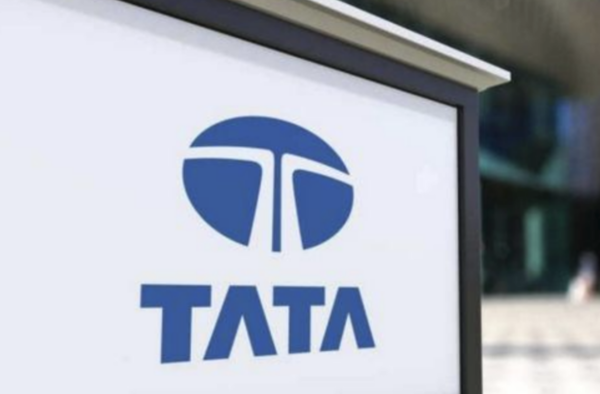When it comes to mobile phone brands you know, the name ” Apple ” will always come to mind. The high-tech has been the most respected company in the world for 16 consecutive years, making it a household name.

Among Apple‘s many products, the iPhone is undoubtedly the most popular. As Apple’s most popular product, the iPhone has firmly grasped the wallets of Apple fans , and each generation of products has achieved good sales results. In 2007, Jobs released the first-generation iPhone, which pushed people into the era of smartphones . Relevant statistics show that as of January this year, Apple has sold a total of 2.32 billion iPhones.
However, the popular iPhone at home and abroad is not produced by Apple itself, but finds a foundry to produce it. As we all know, most of the world’s iPhones are manufactured by Foxconn factories in mainland China, and the main manufacturing bases are located in Zhengzhou, Shenzhen, Chengdu and Wuhan factories. After years of hard work in the market, Apple’s layout in my country has been perfected. However, in recent years, Apple has begun to put more mobile phone production in India, but the iPhones produced in India seem to be somewhat substandard…
Only 50% of Indian-made iPhones are good
Apple’s efforts to shift its supply chain to India are encountering local difficulties, as Apple’s production operations in India struggle to scale up due to low component yields and slow progress, according to a new report published by the Financial Times.

The report pointed out that practice in recent months has proved that it is difficult for Apple to achieve its expected goals in India. At present, Indian suppliers are not only far from being able to compare with China in terms of scale, but also their production quality cannot keep up.
Relevant data show that the Indian industrial giant Tata Group (Tata) has an apple casing factory in Hosur, and its yield rate is only 50%. In other words, only half of the casings produced at the factory are sent to Foxconn for further assembly. This result is not only a little bit behind Foxconn, but also far from Apple’s zero-defect goal.

Regardless of any product, the yield rate is very worthy of attention. Yield directly affects product cost and scale, and is a key factor in determining high-tech industrialization. We can simply understand the yield rate as the pass rate, and a 50% pass rate is not up to standard for any manufacturing.
On the other hand, it has been revealed that Indian factories do not have the slightest sense of urgency compared to Chinese factories, which are often incredibly efficient. Apple’s expansion into India has been slow, in part because of logistics, tariffs and infrastructure, people familiar with the matter said. In this regard, analysts also mercilessly pointed out that many Indian foundries have “inertia” problems. They can meet “any needs” of electronic product users. thing. In fact, after the signing of the agreement, Indian foundries were not flexible enough to respond to various changes, and were slow to respond to customers’ concerns, unable to give timely countermeasures.
In response to this situation, people involved in Apple’s overseas operations said that the Tata Group factory has formulated a plan to improve production quality. That being said, Apple still has a long way to go to increase production capacity. However, as long as the yield rate can be improved, these efforts are worthwhile for Apple.
Send teachers to arrange training
The yield rate of iPhones produced in the Indian factory is only 50%, which will not only affect the factory itself, but also affect Apple. From the perspective of the entire enterprise, the low yield rate will directly lead to the failure of iPhone production to keep up, which in turn will affect Apple’s performance and stock price performance. This is very scary for Apple.

Not only that, Apple is planning to shift the focus of production capacity. The report pointed out that Apple is trying to get rid of its dependence on China-centric supply chains, establish new businesses in India, and follow the successful route adopted in China 20 years ago to promote its diversification strategy.
It is undoubtedly a major blow to Apple that India’s production cannot keep up. It is understood that Apple originally planned to increase the proportion of iPhones made in India to 25% in 2025 and 50% in 2027. At that time, Apple will make India a global manufacturing center for iPhones. According to the current production level of Indian factories, these figures are obviously impossible to achieve.
Faced with this situation, Apple has also taken measures. According to sources, Apple has recently sent product designers and engineers from California and China to factories in southern India. These “teachers” from China and the United States will conduct long-term training for Indian “students” to help factories start production. But this process is not simple and will consume a lot of time and effort.
Shifting production to India is not easy
In the face of weak consumption and low profits, companies are actively taking measures to reduce production costs, and Apple is no exception, and India is a new blue ocean discovered by Apple. Industry insiders pointed out that India’s cost savings and market potential could benefit Apple’s iPhone supply chain.

As we all know, India has a huge cheap labor force, and the salary cost is much lower than that in China, which can meet Apple’s demand for cost reduction and efficiency increase. And India is already the second largest smartphone market in the world. In order to encourage mobile phone manufacturers to manufacture mobile phones in India, the country has also introduced a subsidy policy. After reaching certain standards, India’s production-related incentives will provide subsidies equivalent to 4%-6% of the five-year production cost, which is very attractive to many manufacturers.
As early as 2017, Apple began to produce entry-level iPhones in India, initially only producing the iPhone SE, and then began to advance to the standard version of the new model. In September last year, Apple began to accelerate the production of high-end iPhones in India. Data shows that from April to December 2022, Apple exported iPhones worth more than $2.5 billion from India, almost double the total exports in the previous fiscal year (April 2021 to March 2022).
Although Apple intends to end its high dependence on China’s supply chain, and hopes to replicate its success in China’s supply chain construction in the past 20 years in India, this is not an easy task. Apple will also face complex challenges in scaling up manufacturing in India.
So far, India is still in its infancy when it comes to smartphone manufacturing. Now, India needs to emulate China and cultivate hundreds of smaller local suppliers to provide components for Apple’s large foundries such as Foxconn. On the other hand, the logistics, tariffs and other issues mentioned above have affected Apple’s rapid expansion to a certain extent. It is understood that difficulties in the entry and exit of goods, taxation, labor and land policies, etc. have hindered the development of India’s electronics manufacturing industry.
However, Apple’s deployment in India has not stopped. In January this year, Bloomberg News reported that 14 Chinese suppliers of Apple had obtained preliminary licenses to operate in India. At the same time, the industry broke the news that Tata Group plans to spend more than 600 million US dollars to acquire Wistron’s iPhone assembly plant in southern India. It is expected that the relevant transaction will be completed before March this year.

It is worth mentioning that this will make Tata the first iPhone production plant in India. Previously, Indian companies only participated in the iPhone supply chain and did not produce finished products. At present, the Tata Group has taken various actions to increase Apple-related business, including accelerating the hiring of the Hosur factory, which produces iPhone components and is located near Bangalore, to expand the iPhone production line.